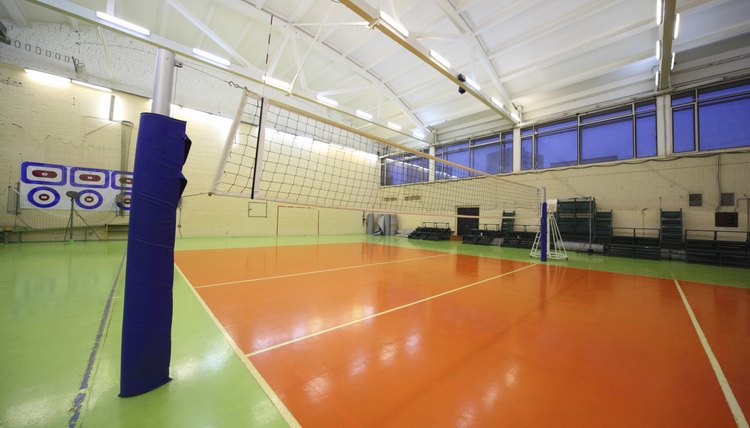Volleyball Facilities & Equipment

Volleyball was invented in 1895 by William G. Morgan as a less-strenuous alternative to basketball for middle-aged men. The sport began as a loose conglomeration of several other sports, incorporating equipment and ideas from badminton, tennis and basketball. As the game developed, the court and equipment used became uniquely refined to meet the specific needs of the sport.
History
Morgan’s original game used the rubber bladder out of a basketball as the first volleyball, which was hit over a badminton net that was suspended 6 ½ feet off of the ground. The court was divided into two 25-foot square halves, and each team was allowed to have as many players as could fit on the court. Roughly one year after the sport was created, Spalding designed the first official volleyball, and by 1900 the ball used became more or less standardized. By 1928, the United States Volleyball Association was established to oversee the sport and ensure that standards were established for all court and equipment usage.
Court
Today, courts must meet the specifications set forth by USA Volleyball and the international governing body, FIVB. Indoor courts must measure 18 meters long by 9 meters wide and have an attack area demarcated 3 meters back from the centerline. The lines used on the court should not be any wider than 5 cm. A free space measuring 2 meters in any direction is recommended around the playing area of the court to prevent any accidental obstructions of play. Above the highest point of the net, there should be at least 7 meters of space to allow the ball free travel, though 12 meters is recommended.
Ball
The ball used for volleyball is smaller than the basketball bladder that was used originally. For indoor volleyball, it should have a circumference between 65 and 67 cm when fully inflated to an inner pressure between 4.3 and 4.6 lbs. psi. Once inflated, the ball must weigh between 260 and 280 g. During FIVB competitions and world events, three balls are used and must meet the same standards as the other balls before being approved for play.
Net
Net height can vary depending on the age of the players and the class of volleyball being played. The standard height used for men over the age of 15 is 2.43 meters measured from the lowest point of the net to the court floor. For women over the age of 13, the standard measurement is 2.24 meters. The net extends to each of the sidelines on the court and should be the same height at both sidelines. The net itself is 1 meter wide. At either end of the net, an antenna is attached that is 10 mm in diameter and extends 1.8 meters above the net. These antennae are considered part of the net and are used to delineate the vertical crossing space.
Beach
The beach variant of volleyball began in the 1940s. While many of the rules and specifications of this format are the same as indoor volleyball, there are some differences. The court used in beach volleyball is slightly smaller, measuring 16 meters by 8 meters. The ball also is increased in size to a circumference between 66 and 68 cm. The average net height for men and women stays the same.
References
Writer Bio
Writing professionally since 2005, Ryan Haas specializes in sports, politics and music. His work has appeared in "The Journal-Standard," SKNVibes and trackalerts. Haas holds a Bachelor of Arts in English and creative writing from the University of Illinois.
